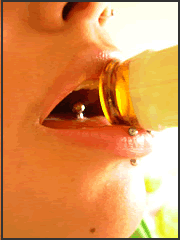
© iStock
Lead researcher Bita Moghaddam, a professor in the Department of Neuroscience in Pitt’s School of Arts and Sciences, said that although the exact mechanics of the adolescent brain’s reaction need further investigation, the current study is a starting point in mapping the neural path from stimuli to behavior in the adolescent brain. Pitt neuroscience doctoral student David Sturman was the “Behavioral Neuroscience “report’s lead author, conducting the study with Moghaddam and Pitt research assistant Daniel Mandell. The project was supported by the National Institute of Mental Health.
“Adolescence is a period of volatility and vulnerability with tendencies toward interpersonal conflict, emotional reactivity, and risk behavior, but we know very little about the brain mechanisms that promote this state,” Moghaddam said. “We want to know how the adolescent brain interacts with the environment at the brain-cell level, when the neural signals are firing. Once we identify how certain factors trigger teenage behavior, we might better understand-and possibly address-the origin of the risk taking and psychological disorders such as depression and schizophrenia that occur during this period.”
The researchers trained adolescent and adult rats to respond to a visual light cue by rewarding them with sugar pellets. Previous research has shown that adolescent rats and mice exhibit behavioral differences from adults similar to those of adolescent humans, including greater impulsiveness, impatience, and vulnerability to psychological problems, the authors wrote. The rats were placed in front of three holes with the light behind the middle hole. If a rat poked its nose into the center hole when the light was activated, it received a pellet; if it explored the right or left hole, it got nothing. The researchers found that the adolescents responded to the light cue at least as readily as adult rats, suggesting a similar or slightly better capacity for learning.
After six days, the rats no longer received a reward for choosing the center hole. They were divided into four test groups, each with an equal number of adults and adolescents: rats that were given 20 percent less food between sessions and received the light cue; rats that received the light cue but could eat as much as they liked between sessions; a group that received less food and no light cue; and a group that could eat between sessions but was not shown the light cue during the experiments.
Moghaddam and her team found that adolescents tended to return to the center hole far more often than the adults although they received no reward and continued going to the hole long after the adult rats stopped altogether. Such doggedness was even more prominent in adolescents who received the light cue and had a restricted diet before the experiment. This group nosed the center hole 30 times, twice as often as adults under the same circumstances and as adolescents with less food and no light cue. Adolescents that received the cue and had free access to food made for the center hole only a third as often.
Thus, rats experiencing internal and external stimuli-hunger and the light cue-compulsively sought the earlier reward long after the other rats realized it no longer existed. These results suggest that human teenagers can similarly behave irrationally and compulsively when faced with certain feelings and settings, Moghaddam said. “A scenario could range from the relatively mundane, such as hungry teenagers being more likely than adults to buy fast food immediately after seeing an advertisement, to despair and relationship problems eliciting thoughts of suicide,” she said.
For the project’s next phase, the Pitt group will repeat the experiments while monitoring activity in the emotion and cognition centers of the adolescent and adult rats’ brains, Moghaddam said. This information will help Moghaddam and her colleagues grasp how brain cells encode the behavioral signals sent in response to stimuli.
Source: University of Pittsburgh

